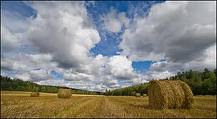Recently, and one of the reasons I haven't posted anything for so long, my eye glasses broke. Some may think that is a good thing because then new frames would be in the near future. But not for me--I didn't have any vision assistance as backup. After freaking out at the obscene amount of money I had to fork out in order to see, I realized just how grateful I am for the ability to see clearly, and for those geniuses who can cut, grind and polish plastic in such a distinct way that I am able to have clear vision both near and far. As I was looking at vision simulations showing the difference in bifocal lenses and progressive lenses, I thought how it could be used in understanding depth of field in photography.
 |
| Image A |
Image A shows a typical viewing distance in a corrective lens using the progressive lens. For those of you who have not reached the "vision over 40" dilemma yet, just wait. Your turn is coming. I would also highly recommend the progressive over typical bifocal. Why? The first reason is pure vanity--no one can see by looking at your glasses that you need corrective reading glasses. The second is vain also--no need to have those cute little glasses with the chain on the ear pieces hanging on the end of your nose.
 |
| Image B |
Now, on to Image B. You can see the three different focus areas in the three types of lenses. With just a reading lens, (top photo) you are only able to see a very narrow depth. Thus, your DEPTH OF FIELD is short or shallow. This is where you can see the comparison between eyeglasses and camera depth of field. The middle photo has even a more narrow viewing area as you can see by the clear circle area and the bottom photo has the greatest viewing area, or the widest depth of field.
So, how do I do that in my camera, you ask? The depth of field in an image is referring to the area that appears acceptably sharp and is mainly controlled by the aperture. So, your focusing area may be the entire scene before you, or just one tiny little flower. Below are some images that show differing depths of field.
This image has a shallow depth of field--the focus is on the girl in the center, with everyone else being out of focus. Notice that the transition from sharp to blurry is not a defined area but a gradual one. Some cameras have the ability to let you see the depth of field based on your camera settings--way cool advantage here, cause you don't have to think as hard--just kidding. Remember the blog post that described the aperture settings and showed a picture of the way the different aperture settings looked? You can go back to the archive and read it later. The aperture controls how much light is allowed in the camera, thus controlling how much of the image is in focus.
 This image of the hay field shows a large depth of field which is a great way to show off scenic photos like this one. The aperture was probably set at f/16 or even f/22 in order to make sure everything was sharp from the front of the scene to the back of the scene--just like the progressive lens, you can see clearly from the close up area to the far distant area.
This image of the hay field shows a large depth of field which is a great way to show off scenic photos like this one. The aperture was probably set at f/16 or even f/22 in order to make sure everything was sharp from the front of the scene to the back of the scene--just like the progressive lens, you can see clearly from the close up area to the far distant area.Controlling your depth of field is fun! Don't get scared here, but you WILL need to take your camera off of auto mode. You need to be able to tell the camera what to do. Side note, here: if you are a scrapbooker and tend to cut off large portions of your photos because you don't like the areas in the photo around your subject, try changing your aperture to create a shallow depth of field next time you take pictures at that party or of your child at the park, etc. You will be pleased with the results.
So, time to go practice. You may think that understanding depth of field is way out of your league, but fear not. It can be conquered. It takes practice, practice, practice. There are formulas and lots of other technical stuff that can help you understand, but I think the easiest way to start is to simplify the concept. So, I hope this helps you. If you have questions, or don't quite understand what I am saying, please feel free to contact me, or even leave a message. No question is a stupid question.



